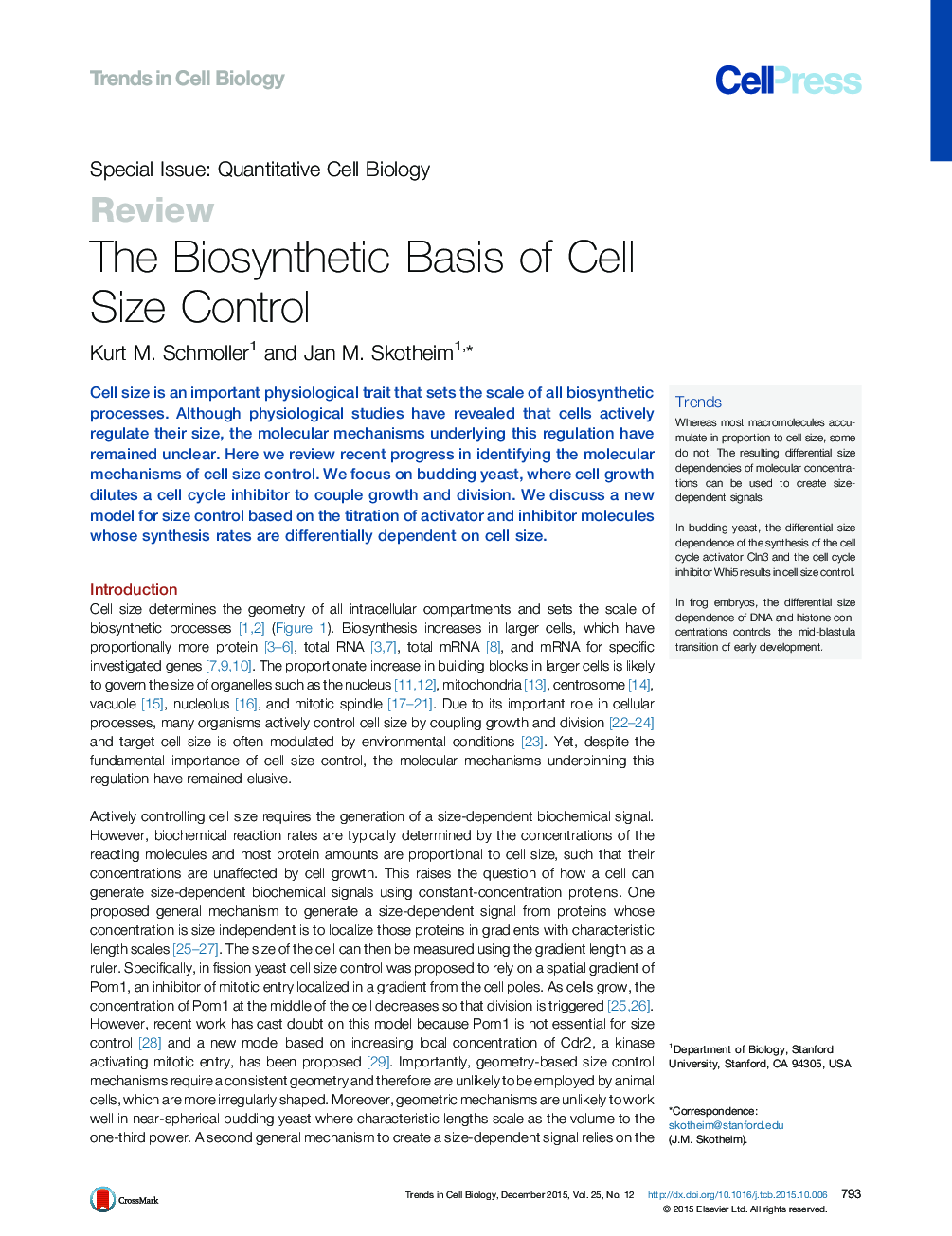| Article ID | Journal | Published Year | Pages | File Type |
|---|---|---|---|---|
| 2204261 | Trends in Cell Biology | 2015 | 10 Pages |
Cell size is an important physiological trait that sets the scale of all biosynthetic processes. Although physiological studies have revealed that cells actively regulate their size, the molecular mechanisms underlying this regulation have remained unclear. Here we review recent progress in identifying the molecular mechanisms of cell size control. We focus on budding yeast, where cell growth dilutes a cell cycle inhibitor to couple growth and division. We discuss a new model for size control based on the titration of activator and inhibitor molecules whose synthesis rates are differentially dependent on cell size.
TrendsWhereas most macromolecules accumulate in proportion to cell size, some do not. The resulting differential size dependencies of molecular concentrations can be used to create size-dependent signals.In budding yeast, the differential size dependence of the synthesis of the cell cycle activator Cln3 and the cell cycle inhibitor Whi5 results in cell size control.In frog embryos, the differential size dependence of DNA and histone concentrations controls the mid-blastula transition of early development.
